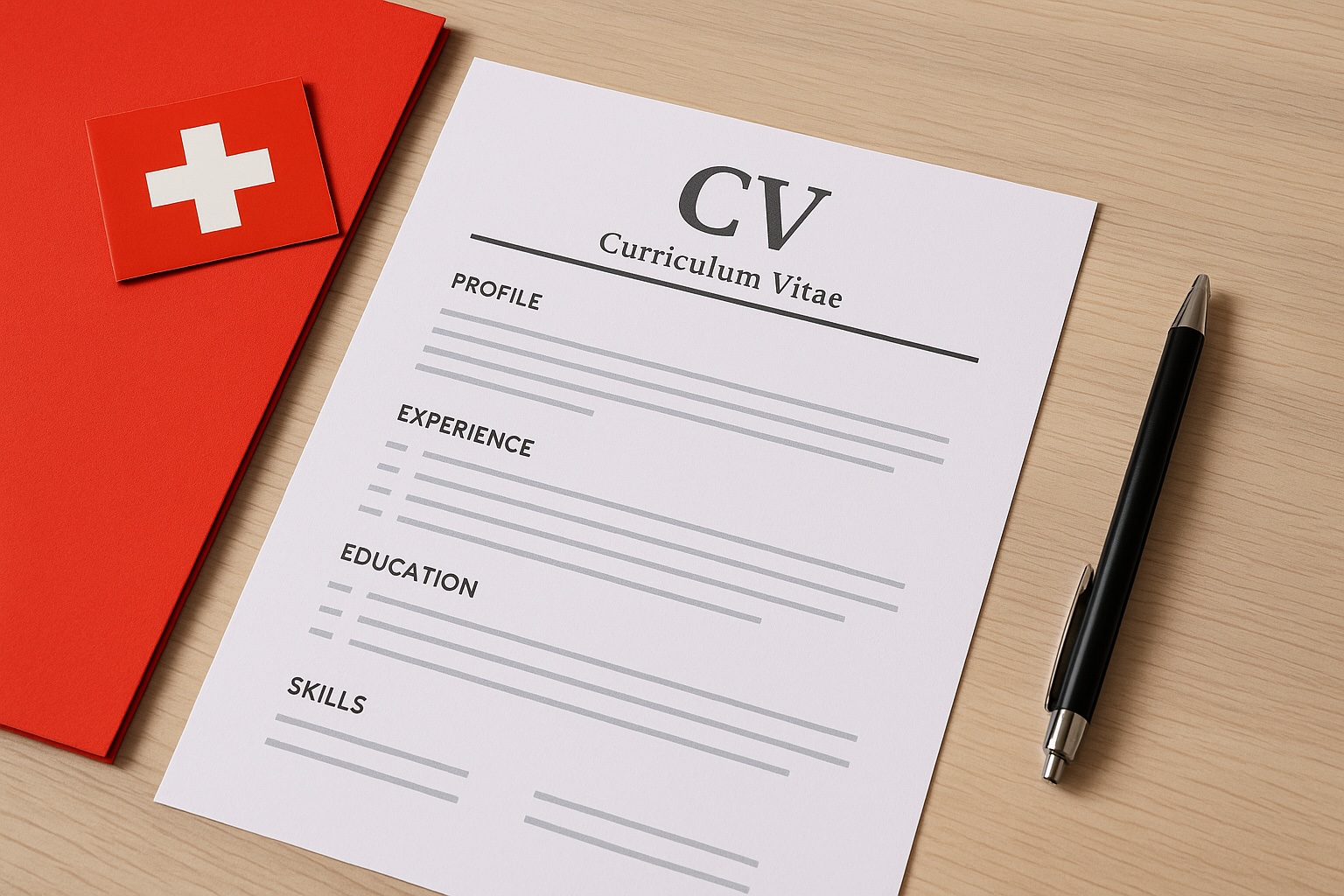To land your next job in Switzerland, having a strong resume (“Lebenslauf”, “Curriculum Vitae” or CV) that meets local expectations is crucial. Swiss employers value conciseness, structure, and clarity. This guide offers practical tips—based on real Swiss recruitment standards—to help you craft a resume that works.
Format and Structure
Length & Layout: Resumes should be 1–2 pages, clearly organized. Use clean fonts like Arial or Calibri. Margins at least 2 cm; headings in bold.
Personal Details: Begin with:
- Full name
- Photo (professional headshot; Swiss recruiters expect this)
- Swiss address (if available)
- Phone number (Swiss number recommended)
- Professional email
- LinkedIn or GitHub link (for tech roles)
Optional but useful: Date of birth, nationality, marital status—though less common today, still accepted.
Professional Photo
Your photo matters. Use a recent, quality image on a neutral background. Dress smartly as you would when meeting local professionals. A first impression counts.
CV Sections
- Profile or Summary A short – 3 sentence overview describing your experience, key skills, and career objectives. Focus on local relevance (“5 years in European finance role”).
- Professional Experience List roles in reverse-chronological order, with:
- Dates (month/year)
- Job title and employer
- Location (city, country)
- 3–5 bullet points highlighting achievements and metrics Use Swiss phrasing like “Created a cost-saving solution which cut expenses by 15%.”
- Education Similar reverse-chronological format. Include:
- Institution name
- Degree/certification
- Graduation month/year
- Relevant coursework or honours
- Skills & Languages Organize by category:
- Technical (e.g., Python, SAP, AutoCAD)
- Soft (e.g., project leadership, communication)
- Language skills: list languages with proficiency — e.g., German (C1), English (native), French (B2)
- Certifications & Training Include Swiss‑recognized credentials: Scrum Master, CFA, first-aid course, etc.
- Additional Sections (if relevant)
- Publications or presentations
- Volunteer roles
- Awards – Professional memberships
Style and Tone
- Be factual and results‑oriented using action verbs like “Developed”, “Implemented”, “Achieved”.
- Quantify achievements (e.g., “Managed a CHF 500k budget”).
- Keep bullet points concise (10–15 words each).
- Use Swiss spelling (Swiss German vs. German/English); stay consistent with UK or Swiss English.
Photo Guidelines
- Not required, but strongly recommended or expected.
- Use a front-facing photo, neutral background, natural lighting.
- Online image requests for Swiss resumes help capture typical formats.
Tailoring to Switzerland
- Include Swiss experience: Any connection to local clients, projects, or companies
- Language reference: Note if you’re learning German/French or in immersive courses
- Work permits: State your status (“C permit – unrestricted”) early to eliminate uncertainty
Cover Letter Integration
Resumes in Switzerland are typically accompanied by a cover letter. Keep the resume objective, resume details; save value statement and motivation for the letter. Your resume and letter should match stylistically.
ATS Readiness
Large employers use applicant tracking systems (ATS). Use keywords related to the job posting; avoid images or designs that may get rejected. Use headings like “Professional Experience”, “Education”.
Common Swiss Mistakes to Avoid
- Spelling errors and inconsistencies
- Including irrelevant personal details
- Lacking Swiss or regional context
- Exaggerating experience
- Choosing poor-quality photos
Final Review Checklist
- Length: max 2 pages
- Clear structure with distinct headings
- Quantified impact in bullet points
- Language, grammar, and spelling polished
- Swiss photo and contact information
- Permits and language skills specified
- ATS compatibility maintained
Final Thoughts
A Swiss‑style resume is concise, polished, results‑focused, and visually clean. Use tailored insights about Switzerland’s work culture: performance, language skills, and legal readiness. Put in the time now, and you’ll improve your chances—from recruiter inbox to interview room.
